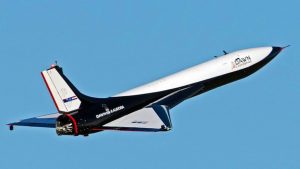
Dawn Aerospace, the international company that recently decided to locate its only U.S. operation at Oklahoma’s Burns Flat Space port, says its recent successful flight carrying a payload in New Zealand builds on its partnership with Oklahoma.
Dawn Aerospace flew the Aurora spaceplane carrying California Polytechnic State University’s student-built payload, reaching Mach 0.79 and an altitude of 37,000 feet.
This flight on June 24th—Aurora’s first from Dawn’s newly operational launch facility at Tāwhaki National Aerospace Centre—carried Cal Poly’s payload, making it the first U.S. student-built experiment to fly aboard Aurora and marking a major milestone for university-led research in reusable spaceplane development.
OK Energy Today first reported the successful flight in August but Dawn Aerospace revealed more details in a press release this week, and cited the importance to its Oklahoma operations headquartered at the former Air Force Base. The first flights at Burns Flat are set to begin in 2027.
“This collaboration underscores a major leap forward in scaling reusable suborbital spaceflight across the United States with operations at the Oklahoma Air & Space Port set to extend Aurora’s flight profile to 338,000 ft (100 km). By teaming with Cal Poly, Dawn is demonstrating how academic institutions can help lead this transformation while highlighting the opportunity for U.S. research units to leverage Oklahoma’s forward‑looking spaceport as a national hub for innovation and direct access to space,” stated the firm’s press release.
Cal Poly’s payload was designed to test whether student-built hardware could withstand the rigors of high-altitude, spaceflight-like environments. Using a modified data system from Bolder Flight Systems, the mission focused on proving that the team could build and operate a payload ready to integrate with a commercial spaceplane. Just as importantly, it served as a training mission—giving students hands-on experience and laying the groundwork for future Cal Poly launches from the upcoming Paso Robles, California Spaceport.

Aurora’s horizontal launch architecture — taking off and landing like a conventional aircraft — offers unparalleled benefits for academic institutions:
-
Rapid, repeatable operations enabled by true reusability, cutting turnaround time from months to days.
-
Dramatically lower infrastructure costs by eliminating the need for costly vertical launch pads and fixed facilities.
-
Expanded university access through commercial partnerships that open new pathways for research and innovation.
Click here for video of flight

